【问题描述】
编写程序在不增加结点的情况下,将二叉排序树转换成有序双向链表(如下图)。
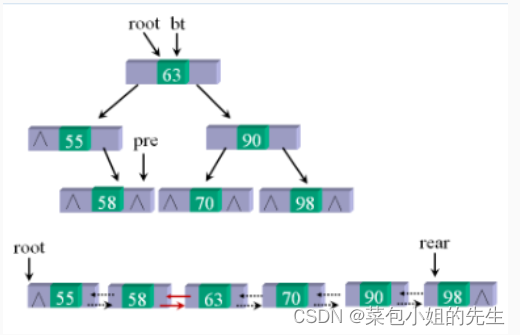
链表创建结束后,按照从前往后的顺序输出链表中结点的内容。
【输入输出】
【输入形式】
第一行输入数字n,第二行输入n个整数。
【输出形式】
按照从后往前的顺序输出链表中的结点内容。
【样例输入】
6 63 55 90 58 98 70
【样例输出】
Convert binary sort tree into linked list...
55 58 63 70 90 98
【代码】
多加了个逆序输出链表内容……
#include<iostream>
using namespace std;
const int MAX = 1000;
struct BiNode {
int data;
BiNode* lchild, * rchild;
};
class BiSortTree {
private:
BiNode* root; //指向根结点的头指针
BiNode* rear; //指向尾结点的指针
//BiNode *pre; //---指向当前访问的结点的前序节点
public:
BiSortTree(int array[], int arrayLength); //构造函数,建立一棵二叉树
~BiSortTree(); //---
void convertBiToLink(); //---二叉排序树转换成双向链表
void DisplayLink(); //---显示双向链表
void ReverseDisplayLink(); //---逆序显示
void release(BiNode* bt);
private:
void insertBST(BiNode*& bt, BiNode *key);
void convert(BiNode* bt); //---二叉排序树转换成双向链表的递归程序
};
BiSortTree::BiSortTree(int array[], int arrayLength)
{
root = NULL;
for (int i = 0; i < arrayLength; i++)
{
BiNode* p = new BiNode;
p->lchild = p->rchild = NULL;
p->data = array[i];
insertBST(root, p);
}
}
BiSortTree::~BiSortTree()
{
release(root);
}
void BiSortTree::release(BiNode* bt)
{
if (bt != NULL)
{
release(bt->lchild);
release(bt->rchild);
delete bt;
bt = NULL;
}
}
// 插入节点
void BiSortTree::insertBST(BiNode*& bt, BiNode *key)
{
if (bt == NULL)
{
bt = new BiNode;
bt->data = key->data;
bt->lchild = NULL;
bt->rchild = NULL;
}
else
{
if (key->data < bt->data)
insertBST(bt->lchild, key);
else if (key->data > bt->data)
insertBST(bt->rchild, key);
}
}
/*二叉排序树转换成双向链表
二叉排序树的递归定义是:
若它的左子树不空,则左子树上所有结点的值均小于它的根结点的值;
若它的右子树不空,则右子树上所有结点的值均大于它的根结点的值;
它的左、右子树也分别为二叉排序树;
实现思路:
1.二叉排序树的特点就是一个结点的左子树比它小,右子树比它大,所以可以根据中序遍历得到一棵排序的序列。
2.由于不能创建新结点,那么我们只能去修改原始二叉树的指针。
这里我们让指向左子树的指针变为链表中指向前序结点的指针,而指向右子树的指针变为链表中指向后一个结点的指针。
*/
void BiSortTree::convertBiToLink()
{
if (root == NULL)
return;
else
{
convert(root);
//将root指向链表的头部
while (root->lchild) //root从当前位置出发,向其左孩子移动,直到左孩子为空,到达头部
{
root = root->lchild;
}
}
}
//二叉树转换成双向链表,采用中序遍历,当访问根节点的时候实现转换
void BiSortTree::convert(BiNode* bt)
{
static BiNode* pre = NULL; //指向当前访问节点的前序结点
if (bt == NULL)
{
return;
}
else
{
convert(bt->lchild); //访问左子树
//访问根节点
if (pre == NULL) // 如果是链表的第一个节点
{
root = bt; // 设置链表的头部
}
else
{
pre->rchild = bt; // 将前一个节点的右指针指向当前节点
bt->lchild = pre; // 将当前节点的左指针指向前一个节点
}
pre = bt; // 当前根节点变成前序结点
convert(bt->rchild); // 访问右子树
}
}
//正序输出二叉排序树链表
void BiSortTree::DisplayLink()
{
BiNode* p;
p = root;
while (p)
{
cout << p->data << " ";
p = p->rchild;
}
cout << endl;
}
//逆序输出二叉排序树链表
void BiSortTree::ReverseDisplayLink()
{
if (root == NULL)
return; // 如果链表为空,直接返回
BiNode* p = root;
// 找到链表的最后一个节点
while (p->rchild)
{
p = p->rchild;
}
// 逆序输出
while (p)
{
cout << p->data << " ";
BiNode* temp = p->lchild;
delete p; // 释放节点以避免内存泄漏
p = temp;
}
root = NULL; // 清空链表头部指针
rear = NULL; // 清空链表尾部指针
}
int main()
{
int n;
cin >> n;
int array[MAX] = { 0 };
for (int i = 0; i < n; i++)
{
cin >> array[i];
}
cout << "Convert binary sort tree into linked list..." << endl;
BiSortTree BSTLink(array, n);
BSTLink.convertBiToLink();
BSTLink.DisplayLink();
cout << "Reverse display link...\n";
BSTLink.ReverseDisplayLink();
return 0;
}
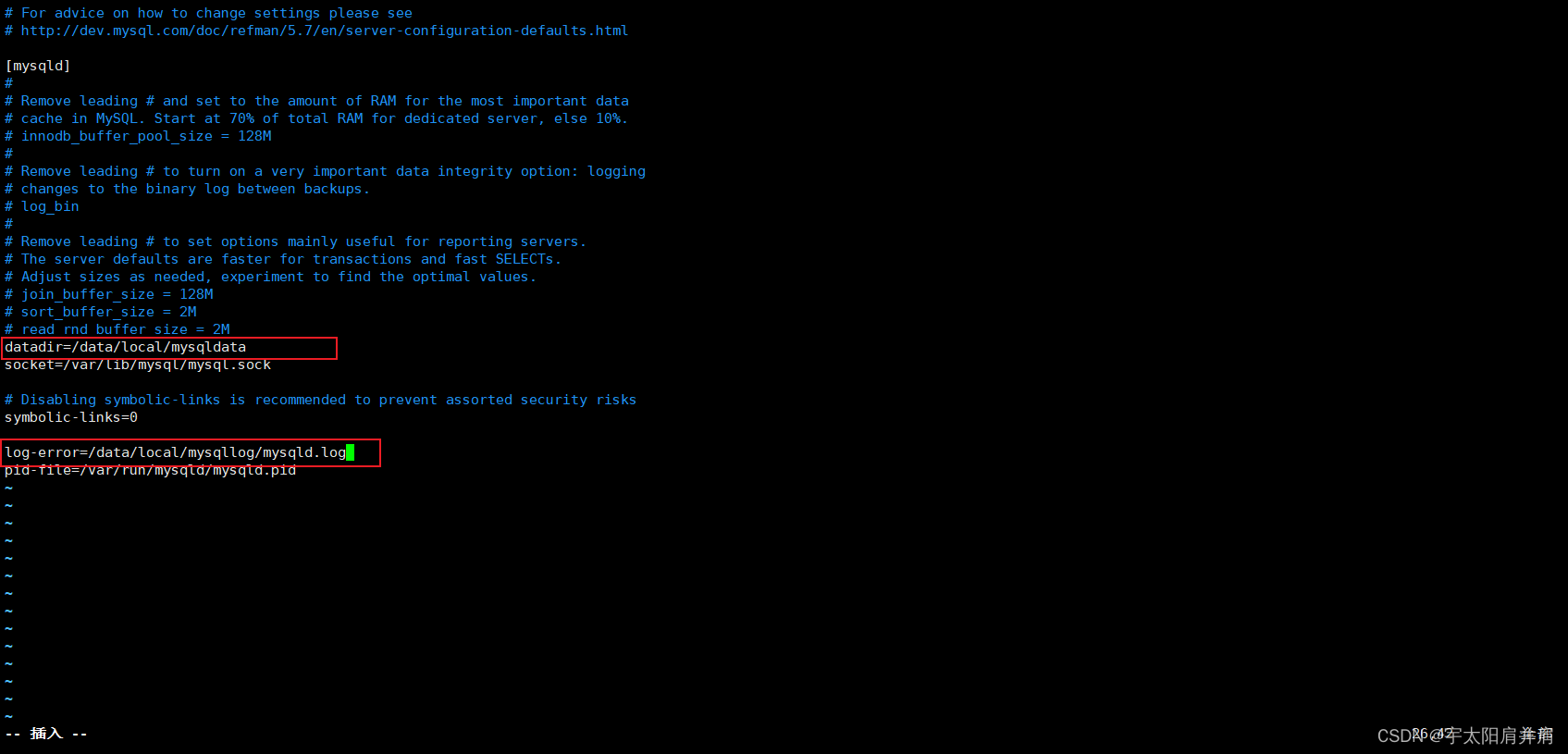

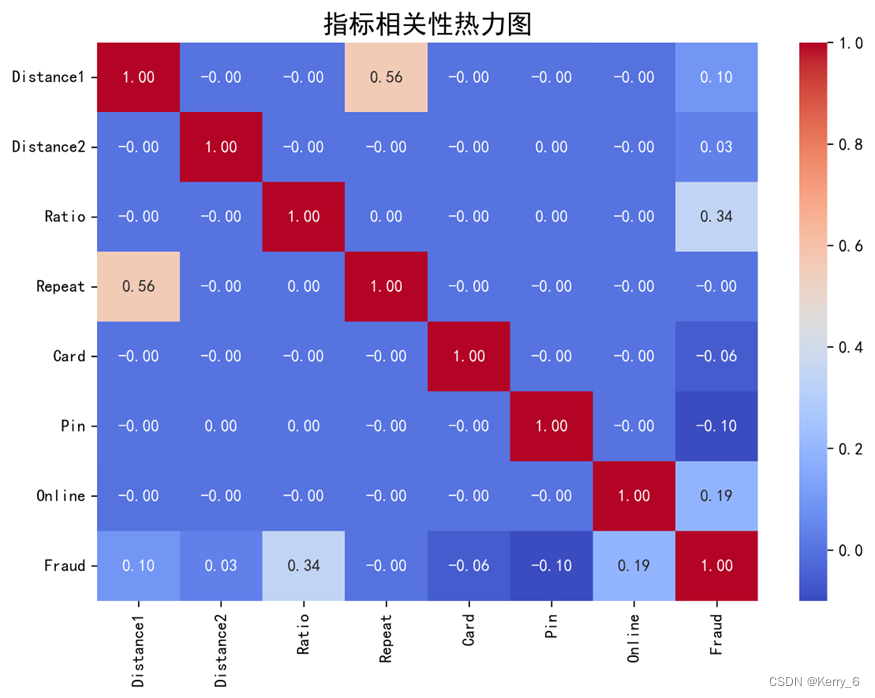


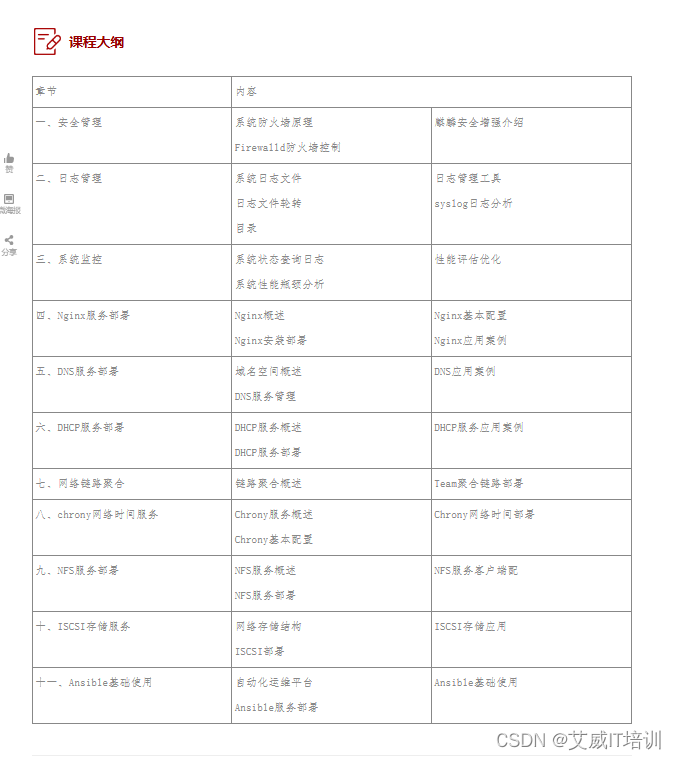


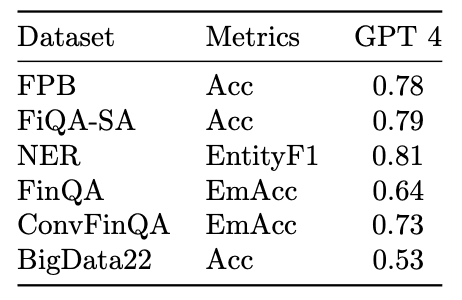


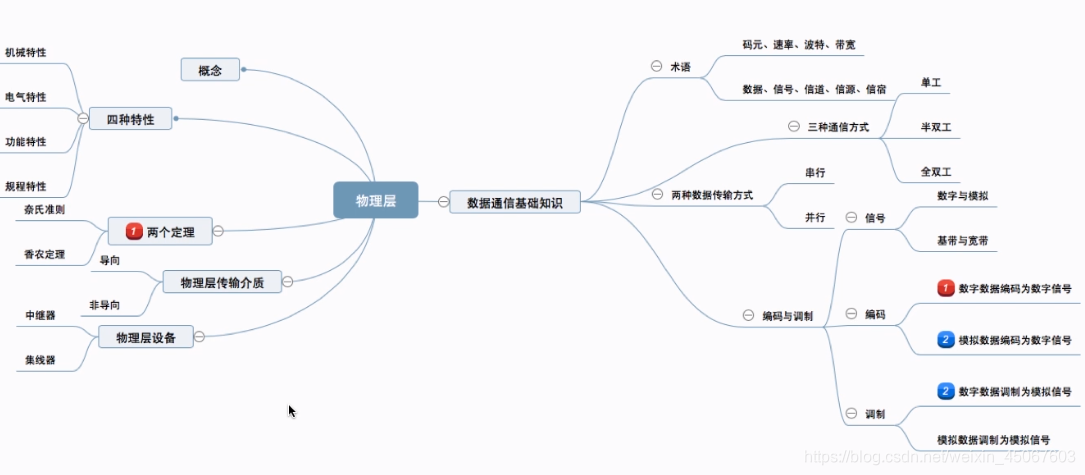



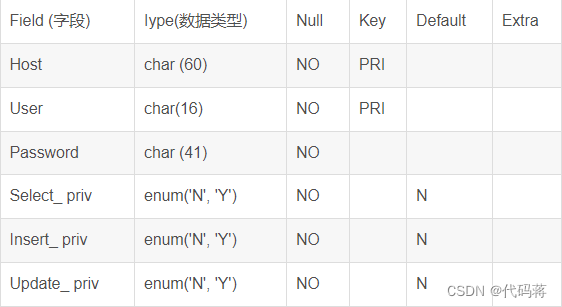
![[office] 如何在Excel中拉动单元格时表头不变形- #学习方法#职场发展#经验分享](https://img-blog.csdnimg.cn/img_convert/5a3c06638554f1864bcb49673ff3ad98.jpeg)
![[word] 在Word中插入分页符 #经验分享#经验分享#笔记](https://img-blog.csdnimg.cn/img_convert/b739fe20b82086d88922a8a73284c963.gif)
